Explore Nagano Prefecture - Japan Travel, Asia
Travelers looking for a fusion of natural beauty and cultural legacy will have the best time of their life in Nagano, the region that is tucked away in the center of Honshu, the main island of Japan. With its picturesque scenery, historic temples, and vibrant festivals, Nagano invites y ou to explore its multifaceted appeal. Whether you're drawn by the allure of pristine snow-covered peaks or the promise of traditional Japanese charm, Nagano has something to captivate every visitor.
Ready to dive deeper into Japan's wonders? Discover our premium Japan tours here for an extraordinary experience.
Population: Approximately 2 million in 2023.
Economy: With a major focus on electronics, computer technology, precision manufacturing, agricultural and food goods, and tourism, Nagano Prefecture has a sizable and diverse economy.
Landmarks: Famous for the Japanese Alps, Snow Monkey Park, and Zenko-ji Temple.
Japan
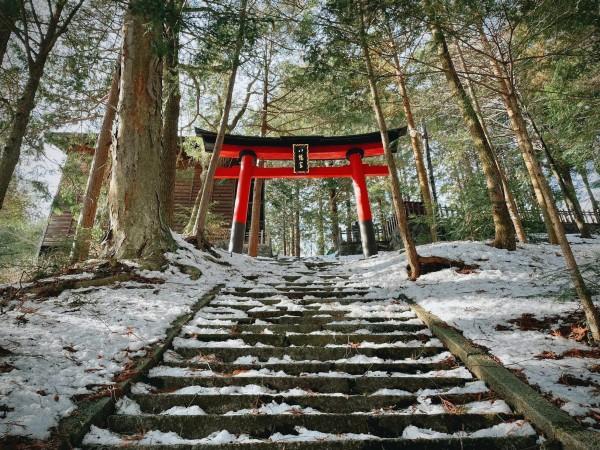
Overview of Nagano
History & Cultural Influence
The history of Nagano is closely linked to the greater tale of Japan. As a region, it has played a pivotal role in the development of Japanese culture, particularly through its association with Zen Buddhism and Shintoism. The ancient Zenko-ji Temple, a major pilgrimage site, stands as a testament to Nagano’s spiritual heritage, together with Matsumoto Castle, another historical gem, offers a glimpse into Japan’s feudal era. Known for its distinctive black exterior, this castle is one of Japan's premier “hirajiro” (flatland castles) and provides insight into the country’s samurai history. The combination of historical landmarks and ongoing cultural practices makes Nagano a fascinating destination for those interested in Japan’s rich past.
Interaction with The Locals
Nagano Prefecture has a population of approximately 2 million residents. The people here are renowned for their strong sense of community and their warm friendliness. Nagano’s citizens typically enjoy a high quality of life, with access to both natural beauty and cultural heritage. The prefecture's relatively low population density compared to major urban centers contributes to a tranquil and close-knit atmosphere.
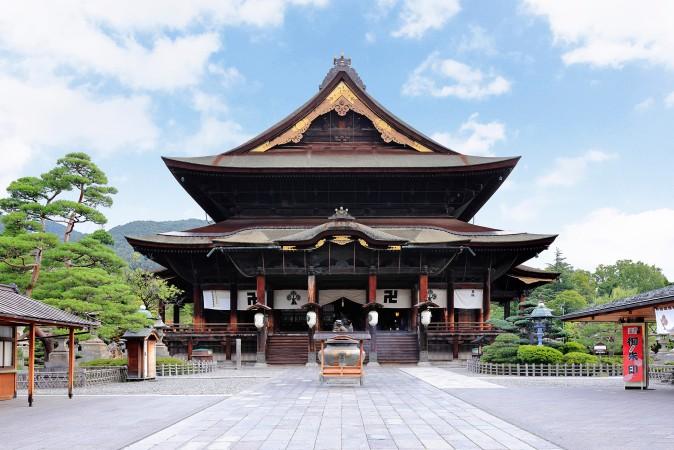
Zenko-ji Temple - © Zenkoji Official Website
Top Attractions in Nagano
Nagano is a destination brimming with diverse attractions that cater to every type of traveler. Each of these attractions provides a unique perspective on Nagano’s rich offerings, from its natural beauty and historical significance to its modern cultural contributions.
Natural Wonders in Nagano
- Japanese Alps: The Japanese Alps, which encircle Nagano Prefecture, provide unrivaled outdoor adventure and scenic splendor. Whether you're an avid skier in the winter or a hiker in the summer, the Alps provide stunning vistas and a range of activities. The Northern Alps, with peaks like Mount Tateyama, and the Southern Alps, including Mount Kita, are particularly renowned for their breathtaking landscapes and well-maintained trails.
- Snow Monkey Park: Located in Yamanouchi, the Jigokudani Monkey Park is famous for its wild Japanese macaques, or snow monkeys, that bathe in the natural hot springs. Visiting the park, especially during the winter months, provides a unique opportunity to observe these fascinating creatures in their natural habitat as they enjoy the soothing thermal waters.
Historical Sites in Nagano
- Zenko-ji Temple: Zenko-ji Temple, situated in Nagano City, is one of Japan’s most significant Buddhist temples. Founded in the 7th century, it is renowned for housing a precious statue of the Buddha that is only revealed to the public once every six years. The temple complex features impressive architecture and offers a serene atmosphere, making it a key destination for those interested in Japanese spiritual and cultural history.
- Matsumoto Castle: Set within a lovely moat, Matsumoto Castle, sometimes referred to as "Crow Castle" because of its striking black facade, is a prominent example of Japanese feudal era architecture and one of the country's most complete and spectacular medieval castles. Its well-preserved keep and historic exhibits provide a glimpse into Japan’s samurai past.
Modern Attractions in Nagano
- Nagano Olympic Stadium: The Nagano Olympic Stadium, built for the 1998 Winter Olympics, remains a prominent sports and events venue. Visitors can explore the site of the Winter Games, which continues to host various sporting events and public activities. The stadium's legacy is a testament to Nagano’s role on the world stage in sports.
- Nagano Prefectural Shinano Art Museum: This museum showcases a range of contemporary and traditional Japanese art. It offers exhibitions that highlight both local and national artists, making it a cultural hub for art enthusiasts. The museum’s collection includes works that reflect the artistic heritage of Nagano and Japan as a whole.
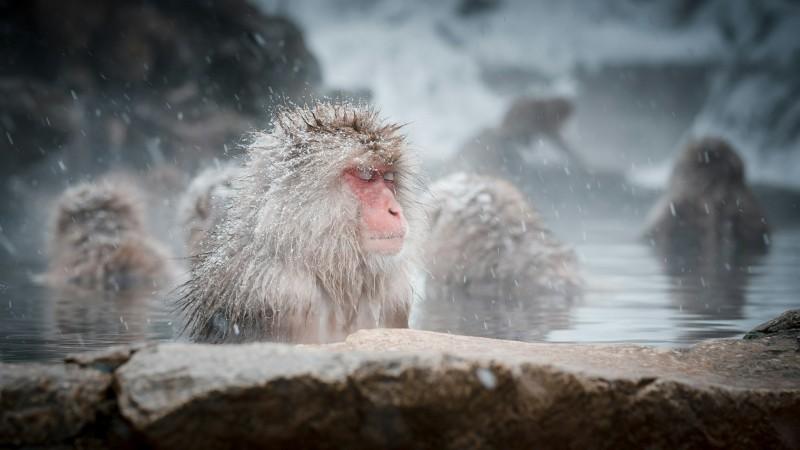
Snow Monkey in Snow Monkey Park - © Rogério Toledo
Must-Try Dishes in Nagano
Nagano's cuisine reflects the region's rich natural resources and cultural influences. Whether you're a food enthusiast or just looking to try something new, the local dishes offer a delightful taste of Japanese culinary traditions.
- Soba Noodles: Nagano is famous for its soba noodles, made from high-quality buckwheat grown in the region. Usually, these noodles are served cold with a dipping sauce or heated in a flavorful broth. The distinct, nutty flavor of Nagano's soba is a must-try for any visitor.
- Oyaki: Oyaki are traditional Japanese dumplings filled with various ingredients such as vegetables, meats, or sweet red bean paste. These rustic, handmade dumplings are often steamed or grilled, offering a comforting and flavorful snack that's deeply rooted in Nagano's culinary traditions.
- Nagano Apples: Known for their exceptional sweetness and crisp texture, Nagano apples are a local favorite. They come in various varieties, including Fuji and Shinano Sweet, and are enjoyed fresh or used in a variety of desserts and baked goods.
- Shinshu Beef: This premium beef from Nagano is renowned for its tenderness and rich flavor. Often served as steak, in hot pot dishes, or grilled, Shinshu beef showcases the region's high-quality livestock and is a highlight of local dining.
- Miso Soup: Nagano's version of miso soup uses local miso paste, which adds a unique flavor to this traditional Japanese dish. It's a common addition to many meals, sometimes eaten with tofu, seaweed, and seasonal veggies.
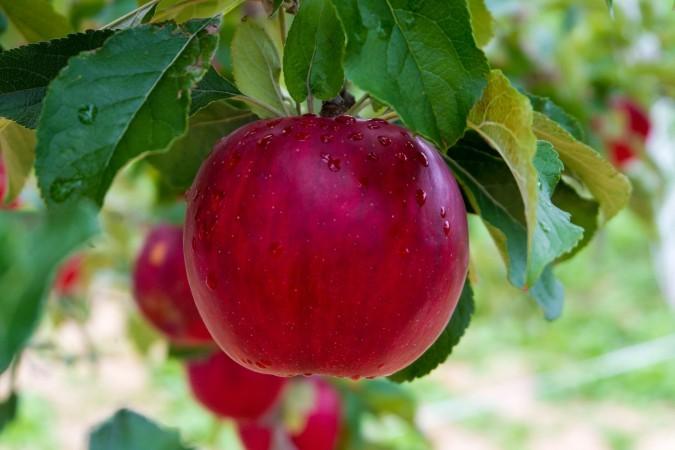
Famous Nagano Apples - © Fumiaki Hayashi
Festivals & Local Celebrations
Nagano’s vibrant festivals and local celebrations provide a unique window into the region's cultural heritage and community spirit. Attending these events offers an immersive experience of local traditions and festivities.
- Nagano Lantern Festival: Held annually in January, the Nagano Lantern Festival lights up the city with thousands of lanterns. This enchanting event celebrates the New Year with beautifully illuminated streets and lively performances.
- Yudanaka Onsen Summer Festival: Taking place in Yudanaka, this summer festival is renowned for its traditional dance performances and lively atmosphere. The event features local food stalls, music, and a spectacular fireworks display.
- Traditional Performances: Throughout the year, Nagano hosts various traditional performances, including Noh theater and Taiko drumming. These events provide insight into Japanese performing arts and cultural practices.
- Seasonal Celebrations: Experience seasonal events such as cherry blossom festivals in spring and autumn foliage tours. These celebrations highlight the natural beauty of Nagano and offer picturesque settings for visitors.
What to Do in Nagano
Nagano offers a diverse range of activities to suit all interests, from outdoor adventures to cultural experiences. Whether you’re seeking thrills or relaxation, there’s something for everyone.
Outdoor Activities in Nagano
- Skiing and Snowboarding: Nagano is renowned for its world-class ski resorts, including Hakuba Valley and Nozawa Onsen. With abundant snow and well-maintained slopes, it’s a paradise for winter sports enthusiasts.
- Hiking Japanese Alps: The Japanese Alps provide stunning hiking opportunities. Trails like the Kamikochi Valley offer breathtaking views and immersive nature experiences, suitable for both beginners and experienced hikers.
Cultural Experiences in Nagano
- Japanese Tea Ceremonies: Engage in a traditional Japanese tea ceremony at local tea houses. This serene practice offers a glimpse into Japanese customs and provides a peaceful, meditative experience.
- Traditional Craft Workshops: Participate in workshops to learn about traditional crafts such as washi paper making or pottery. These hands-on experiences allow visitors to create their own souvenirs while learning about local craftsmanship.
Seasonal Activities in Nagano
- Cherry Blossom Viewing: In spring, Nagano’s parks and temples become a canvas of pink and white cherry blossoms. Popular spots for viewing include the Zenko-ji Temple grounds and Utsukushigahara Open-Air Museum.
- Autumn Foliage Tours: The fall season transforms Nagano’s landscapes with vibrant red and orange foliage. Scenic spots like the Lake Suwa area and the Hakuba Valley offer stunning views and photo opportunities.
Looking for more adventures? Dive into Matsumoto, another famous destination in Japan, with our article here.
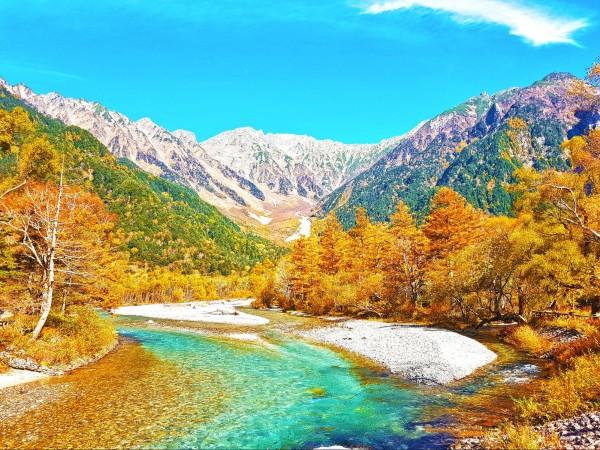
Autumn Foliage Tours in Nagano - © Japan Tourism
Shopping in Nagano
Nagano’s shopping scene combines traditional markets with modern retail outlets, offering a diverse range of goods and unique souvenirs.
Local Markets
- Traditional Markets: Explore local markets such as Nagano's "Jinbocho Market" for fresh produce, artisanal goods, and traditional snacks. These markets are perfect for sampling local flavors and purchasing handmade crafts.
- Souvenir Shops: Look for stores selling Nagano-specific souvenirs, including handcrafted items and local food products like soba noodles and apples. Shops in Matsumoto and Nagano City provide a range of options for finding memorable gifts.
Unique Finds
- Local Crafts: Discover Nagano’s traditional crafts, including pottery, textiles, and woodworking. Items like lacquerware and hand-woven fabrics make excellent souvenirs and showcase local craftsmanship.
- Specialty Foods: Purchase specialty foods such as Nagano apples, regional miso, and artisanal sweets. These items not only offer a taste of the region but also make thoughtful gifts for friends and family.
Popular Shopping Areas
- Downtown Nagano: The city center features a variety of shopping options, from department stores to specialty shops. Areas like "Matsumoto Nakamise" provide a mix of modern and traditional retail experiences.
- Matsumoto: Known for its historic charm, Matsumoto offers a range of shopping experiences, including boutiques and local markets. The city’s shopping streets are lined with stores offering unique and traditional items.
Weather in Nagano: Best Time to Visit
Nagano’s weather varies significantly with the seasons, influenced by its mountainous terrain and altitude. Understanding the climate is crucial for planning your visit and ensuring a comfortable experience.
- Spring in Nagano: Cherry blossoms bloom as the temperature drops from March to May. Visit Nagano in the spring, when outdoor activities are enhanced by the nice weather and vibrant blossoms. The usual temperature range during daytime is 10°C to 20°C (50°F to 68°F).
- Summer in Nagano: June to August is warm and can be quite humid, with temperatures ranging from 20°C to 30°C (68°F to 86°F). This is a great time for hiking and enjoying outdoor activities in the cooler mountain air. The summer also brings occasional rain showers, so packing a light rain jacket is advisable.
- Autumn in Nagano: September to November offers cooler temperatures and stunning fall foliage. Daytime temperatures range from 10°C to 20°C (50°F to 68°F), making it a comfortable and scenic time to explore Nagano’s natural beauty. The colorful autumn leaves are particularly striking in the Japanese Alps and around lakes and temples.
- Winter in Nagano: From December to February, Nagano experiences cold temperatures and heavy snowfall, especially in the mountainous areas. This season is ideal for skiing and snowboarding, with temperatures often dropping below freezing. The snowfall creates perfect conditions for winter sports and picturesque snowy landscapes.
Curious about Kanazawa? Learn more about what makes this spot so special in our detailed article.
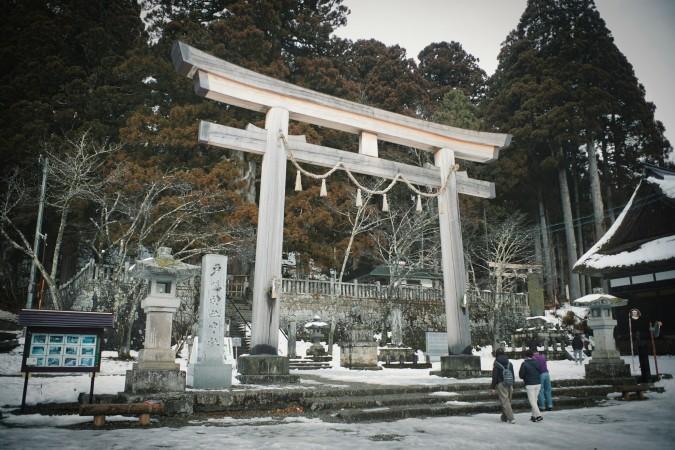
Winter in Nagano - © Xie lipton
Essential Travel Information
Getting Around Nagano
Nagano is well-connected by various transportation options, making it accessible for travelers exploring the region.
- Trains: The JR East network provides efficient train services to and within Nagano. The Nagano Shinkansen (bullet train) connects major cities like Tokyo and Nagoya with Nagano City. Local trains and buses offer convenient travel to tourist spots and ski resorts.
- Buses: Local and express buses connect different areas of Nagano, including rural and mountainous regions. Buses are a practical option for reaching destinations not served by trains.
- Car Rentals: Renting a car offers flexibility for exploring Nagano’s scenic countryside and remote areas. Rental services are available at major transportation hubs, including Nagano Station and Matsumoto Station.
- Bicycles: In some cities and towns, bicycle rentals are available for a leisurely way to explore local attractions. Nagano City and Matsumoto offer bike rental services for tourists.
ATM & Banking Services
Accessing cash and managing banking needs in Nagano is convenient with various options available for both local and international visitors. Many convenience stores have ATMs that accept international credit and debit cards, and these ATMs often offer English language options. Additionally, Japan Post ATMs provide a reliable means for withdrawing cash using international cards and are generally found in post office branches throughout Nagano. For banking services, major banks with branches in Nagano City and other key towns offer a range of services, including currency exchange. Currency exchange services are also available at major train stations, airports, and some larger hotels.
Where to Stay in Nagano
Nagano offers a range of accommodation options to suit various preferences and budgets, from luxury hotels to traditional ryokan inns.
- Hotels: From international chains to local hotels, Nagano provides comfortable and convenient lodging options. Major cities like Nagano and Matsumoto feature a variety of hotels with modern amenities.
- Ryokan (Traditional Japanese Inns): Experience traditional Japanese hospitality by staying at a ryokan, a Japanese-style inn. Ryokan accommodations often include tatami mat flooring, futon bedding, and traditional meals, offering an authentic cultural experience.
- Guesthouses and Hostels: For budget travelers, guesthouses and hostels offer affordable and social lodging options. These are particularly popular among backpackers and young travelers.
- Nagano Ski Resorts: Ski resorts in Hakuba and Nozawa Onsen provide easy accommodation near the slopes during the winter months. Many resorts offer packages that include ski passes and equipment rentals.
Articles for you

Explore Yala National Park - Sri Lanka Travel, Asia
Tucked away in Sri Lanka’s southeastern corner, Yala National Park is where wild nature meets deep tradition. Known worldwide for its leopard population, the park is also home to elephants, sloth bears, crocodiles, and hundreds of bird species. Beyond wildlife, Yala opens doors to a cultural landscape dotted with ancient temples, Buddhist ruins, and coastal villages. For travelers seeking more than just a safari, Yala offers a chance to explore eco-tourism, local communities, and sacred heritage sites.
Population: The Yala National Park area doesn’t have a human population.
Economy: The economy around Yala National Park thrives on a blend of eco-tourism, agriculture, and local services. Safari tours, eco-lodges, and cultural experiences drive steady income for nearby towns like Tissamaharama and Kataragama, supporting thousands of families.
Landmarks: Famous for Block I of Yala and wildlife encounters, including elephants, sloth bears, crocodiles, and exotic bird species.

Explore Galle - Sri Lanka Travel, Asia
Nestled on Sri Lanka’s southern coastline, Galle is a vibrant city where history meets the sea. Its cobbled streets, colonial architecture, and serene beaches make it a must-visit destination for travelers seeking a blend of culture, adventure, and relaxation. A UNESCO World Heritage site, Galle captivates visitors with its Dutch Fort, bustling markets, and friendly locals. Whether you’re exploring the ramparts at sunset or savoring fresh seafood by the shore, Galle promises an unforgettable journey into Sri Lanka’s heritage.
Population: Approximately 113,000 in 2023.
Economy: Galle’s economy thrives on tourism, trade, and fisheries. The city’s historic fort, colonial architecture, and coastal charm draw thousands of international visitors each year, making tourism its main economic driver. Fishing remains vital for local livelihoods, supplying fresh seafood across the region.
Landmarks: Famous for the Galle Fort, Dutch Reformed Church & Maritime Museum, and Unawatuna Beach.

Explore Bentota - Sri Lanka Travel, Asia
Nestled along Sri Lanka’s southwestern coast, Bentota is a tropical paradise that blends golden beaches, vibrant culture, and thrilling adventures. Famous for its calm waters, luxury resorts, and scenic river estuary, Bentota has become a top destination for travelers seeking both relaxation and authentic experiences. From serene beach walks at sunrise to adrenaline-pumping water sports, this coastal town offers a perfect balance of leisure and exploration. With its proximity to Colombo and Galle, Bentota is easy to reach, making it an ideal stop for both short escapes and extended holidays.
Population: Approximately 37,000 in 2023.
Economy: Bentota’s economy thrives mainly on tourism, which drives local businesses such as hotels, restaurants, and wellness retreats. The town also benefits from fishing, coconut cultivation, and handicrafts like wood carving and batik textiles. Many residents rely on the growing demand for water sports and Ayurvedic treatments, making tourism the backbone of both income and employment in the area.
Landmarks: Famous for Bentota Beach, Bentota River Safari, and Kande Vihara Temple.

Explore Mirissa - Sri Lanka Travel, Asia
Mirissa is a charming coastal town on Sri Lanka’s southern shoreline. Known for its golden beaches, turquoise waters, and vibrant marine life, it has become a must-visit stop for travelers exploring the island. Many come for whale watching, surfing, and sunset views at Coconut Tree Hill, but Mirissa offers much more than postcard beauty. The fishing boats you see anchored by the bay carry generations of stories. Local traditions, delicious cuisine, and a laid-back rhythm of life shape every visitor’s experience.
Population: Approximately 4,700 in 2023.
Economy: Mirissa’s economy is largely shaped by its coastal location. Fishing has long been the backbone of local livelihoods, with generations relying on the Indian Ocean for income. In recent decades, tourism has become the main driver of growth, thanks to whale watching, surfing, and beachside hospitality.
Landmarks: Famous for Mirissa Beach, Coconut Tree Hill, and Parrot Rock Bridge.

Explore Nuwara Eliya - Sri Lanka Travel, Asia
Tucked away in the Central Highlands of Sri Lanka, Nuwara Eliya is often called “Little England”. With its rolling tea plantations, cool misty mornings, and colonial charm, this mountain town feels like a step into another world. Travelers come here to breathe fresh air, walk through flower gardens, sip the finest Ceylon Tea, and enjoy a pace of life far from the island’s busy cities. Whether you’re drawn by scenic landscapes, heritage architecture, or the warmth of its people, Nuwara Eliya is a destination that blends nature, culture, and history in perfect harmony.
Population: Approximately 781,000 in 2023.
Economy: Nuwara Eliya’s economy thrives mainly on tea production, as it sits in the heart of Sri Lanka’s central highlands, famous worldwide for Ceylon Tea. The city also benefits from a growing tourism industry, attracting visitors with its colonial charm, cool climate, and scenic landscapes.
Landmarks: Famous for Gregory Lake, Hakgala Botanical Garden, and Victoria Park.

Explore Sukau - Malaysia Travel, Asia
Nestled on the banks of the Kinabatangan River in Sabah, Malaysian Borneo, Sukau is a destination where wildlife, culture, and conservation come together. Known as one of Asia’s top spots for river safaris and eco-tourism, this quiet village offers a front-row seat to encounters with Bornean orangutans, pygmy elephants, proboscis monkeys, and exotic birdlife.
Population: Approximately 1,400 in 2019.
Economy: Sukau’s economy is shaped by its riverine location and natural resources. Traditionally, the Orang Sungai community relied on fishing, small-scale farming, and forest gathering for their livelihood. Today, the village has shifted toward eco-tourism, with river cruises, jungle trekking, and homestays providing income.
Landmarks: Famous for the Kinabatangan River cruises, Gomantong Caves, and Ox-bow lakes and wetlands.
